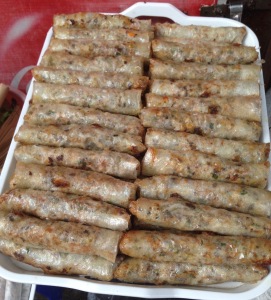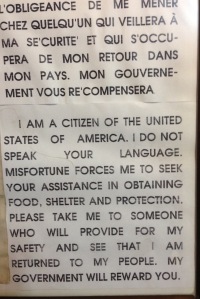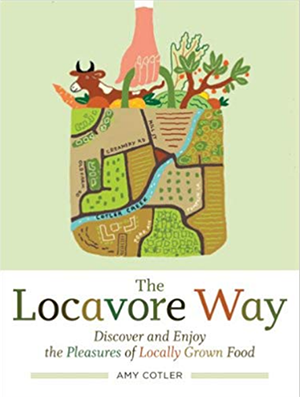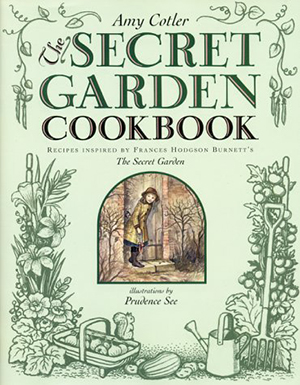
Food that Sings
Vietnamese food came late to the to the US. But I’ve always had a soft spot for its light, herbaceous combos, judicious use of spices and touch of the French. Still, finding great food in Hanoi was tougher than in Thailand, where flavorful food from clean enough street stands is ubiquitous. Determined as ever, I had a list of restaurants, and on our first day we tried to taxi to one. But, the driver got painfully lost, so the four of us turned back in disgust. Hanoi streets are tough to navigate, better for getting lost than found, or so we learned. Chilled in fleece jacket weather with a blooming cold, I nevertheless lunged at Hanoian food, as is my way. I wanted good food and I wanted it NOW.
One day, I sat warming myself with a rich egg coffee, gazing out onto West Lake. Directly outside my window, locals were strolling home from work. On the pavement, between two lanes of mellow traffic, a grey haired woman and her daughter were selling cooked corn on the cob from a giant pot. Pedestrians stopped, bought a bag of corn, sometimes with a cup of warm corn water on the side. A high voice from several floors above us shouted down in Vietnamese. The vendor smiled and nodded, giving her daughter a bagful to be delivered, upstairs.
The following day we passed the Gothic cathedral, Saint Joseph’s. Catholics are a tiny minority in Vietnam, but mass has just finished, and parishioners came pouring out, so we stepped onto a side street. There, a woman stood in front of her 10-seat restaurant with a giant pot of bubbling oil, cooling fried rolls on a rack, a hot red menu posted behind her. We took one of everything. The crab spring roll (Nem Cua Be), a northern specialty, surprised us with its taste of the sea.

Slowly, we began to find good food, great food.
So we visited one of the tasty Quan An Ngon restaurants, set up in a series of stalls, surrounding the large dining room, each featuring traditional Vietnamese food from different regions — all in a clean, pretty atmosphere. These restaurants are generally not my style: too many tables, menus with pictures and too many choices. But I was wrong. We devoured everything we ordered on low slung tables in a roomful of lusty eaters, tourists and Vietnamese alike. And we kept ordering until we couldn’t, trawling the stalls for a delights, then ordering from menu pictures that caught our eye, such as Banh Xèo, a crisp-on-the-edges turmeric colored crepe filled with shrimp, pork and bean sprouts.

And my food pal Shirley and I ordered lacquered little sparrows, which were tasty, although I’m not sure why I ate the heads.


Xoi Yen became our favorite go to neighborhood meal, a joint jammed to the rafters, where a simple dinner costs $1.25. The staff stands out front, spooning up xôi xéo in 4 or 5 variations on a theme: sticky rice, shaved green mung bean cake, topped with goodies like pork or chicken and glorious fried shallots. All came with a tiny plate of pickled cucumbers and a bowl of stock, often served with rice dishes to sip or moisten to taste as you like.

Months later, living in Mexico, I sometimes turn a corner and dream Xoi Yen is waiting for me. In my fantasy, a small thin women is filling my bowl with a paddle of sticky rice. She’s moving swiftly within the coordinated bustle of her comrades, shaving mung bean and topping it with whatever I carefully choose, now that I’m fluent in Vietnamese and can do more than point.

My dream? Return to Vietnam to learn to cook its food, not in a school, but with women, home cooks in their kitchens. Any ideas out there?

To do and See
Hanoi, Vietnam’s second largest city after Ho Chi Minh (Saigon) has been its capital for more than 1000 years. Its historical layers rear up as we walk past the mercantile bustle and young hipsters — working, working, working, drinking coffee and working —pushing forward the city’s future with rapidity. If you’re ever in a cab, drive by the 4 kilometer mosaic wall decorated 2010 to celebrate Hanoi’s millennial. Visit the Museum of Fine Arts, especially the ground floor, for the stunning larger-than-life Buddha carvings, dating from the late 18th century, about the time of the American revolution. So much of Asia’s art is in its temples and monuments, but this museum captures some of its treasures.


Quite by accident, we past the Northgate, built in 1805, and the only one of the five city gates that survived France’s bombardment of the city in the late 19th century. Before you walk in, look in the front, where you can see the canon ball’s destruction to the walls of this massive brick and stone structure. Climb to the top, overlooking the neighborhood.
Of course, the Vietnamese have been at be conquered numerous times — by the Chinese, the French, the Japanese, and again after WWII by the French, who wanted “their” colony back. And course by the US, whose war resulted in 58,000 American military deaths and, by some counts, more than a million Vietnamese. They’re a tenacious people, whatever you think of their government, who deserve self-rule.
As an American baby boomer who spent my formative years during the Vietnam war, I’ve never been able to forget the war and its many protests, some of which my husband and I participated in. Tom’s draft lottery card was high, and so he got off. But this trip brought back the haunting TV images of combat and death that were broadcast in a time when TV actually showed war, rather than slick animated graphics.

The Vietnam Military History Museum with it’s spacious rooms is not sleek and was almost empty when we visited. Its focus is on the French and American war, more on the latter. There are armaments galore, but it’s also worth studying the pictures of the Vietnamese, and seeing the war from their point of view, a rare gift. (In some they’re surrounding their beloved Uncle Ho.) The Vietcong didn’t live in a vacuum, and so followed the massive US protests against the war. One museum wall boosted a framed hat of Vietnam Veteran’s against the war that I found particularly moving. And I was caught off guard by a chilling shot of Nixon with this “advisors” very early on, before the official start of the what the Vietnamese call “The American War.”


Movie freaks, we try to see a film everywhere we visit. That way we get three hits in one — pleasure in the film, the local’s reactions, and a chance to see how a culture sets the tone for experiencing movies. (Think: Standing for the king before the movie in Thailand, or a ticket seller reserving seats purposefully placed side by side in an almost empty theatre in Istanbul.)
The members only Hanoi film club, Cinematheque, is down an alley at 22A Hai Ba Trung. It shows a vast array of foreign films in a 98- seat screening room, where you can tell from the chuckles and sneers their viewers are sophisticated film buffs.

We tried for a hit of literary Hanoi, but there were no readings at the funky-hip bar, Tadioto, a hub for the artistic community. It’s owned by Vietnamese-American journalist and former NPR commentator Nguyen Qui Duc, whose book, Where the Ashes Are, tells of his experience during the war. His father was a senior official in the South Vietnamese government, imprisoned by the Vietcong while his family fled to settle in the US.
One day, while Tommy lay in bed chilled with a cold, I walked to the Temple of Literature. Dedicated to Confucius, it was built in 1070 and served as the first university of Hanoi, honoring the great scholars of Vietnam, some with stones (stela), some with carved tortoises as bases. (Tortoises are good luck in Vietnam.) It’s a sanctuary within the bustling city, a series of 5 large green courtyards, each with its own significance. Walking into the last one, my solitude was broken by hoards of orderly school children in crisp white uniforms with matching hats. A teacher stood in front of the stone building explaining something about the large square of green where they stood. Then, they sang.
On our last morning, I woke up early to visit the park on Hoan Kiem Lake in central Hanoi. Noticing the usually jammed footbridge was empty, I walked across to the shrine for an important tortoise. The Vietnamese consider the dragon, unicorn, phoenix and turtle sacred. As the turtle is the only one that exists in the here and now, it links the temporal to spiritual world. It is said that in the 15th century a Vietnamese hero borrowed a magic sword and used it to repel Chinese forces, before returning it to a turtle that surfaced in the lake. For decades, some say centuries, a 360 pound tortoise lived in this lake, dying only a few years ago, deeply saddening the Vietnamese people. The tortoise of the lake has as long been a symbol of nationalist pride and endurance.
 Travel has made me more conscious of the world’s chauvinism, the racism that colors our lives. And so I was taken aback when an otherwise promising New York Times article on the death of the lake’s tortoise, Cu Rue, called the Vietnamese “very superstitious” for believing in what Westerners might consider a fable. Why not say: “this is what they believe” rather than label it. Do they call Christians superstitious for believing that god’s son was born of a virgin and rose from the dead?
Travel has made me more conscious of the world’s chauvinism, the racism that colors our lives. And so I was taken aback when an otherwise promising New York Times article on the death of the lake’s tortoise, Cu Rue, called the Vietnamese “very superstitious” for believing in what Westerners might consider a fable. Why not say: “this is what they believe” rather than label it. Do they call Christians superstitious for believing that god’s son was born of a virgin and rose from the dead?
It was only 7 am when I strolled off the bridge into the deep green city park. Already, it was buzzing with activity, as is the way with open areas in Asia, where living space can be small. I walked in search of Tai Chi, which I know is an early morning group affair. I found none. Instead I passed: a Zumba class, lessons in the Lindy Hop, old men in a line, swinging their arms in sync, a man in a yoga twist, runners and vigorous walkers and a thin teenager wearing a bike helmet exercising on his own. My favorite? A group of women in their sixties, obviously old pals, taking turns, leading their group in what sounded like traditional songs.
The vigor of the Vietnamese is unstoppable.
Good Resources and Don’t forget
Mostly, we simply walked, seeking out only a few sites. In part, this was because we had colds, but mostly, after months of travel, we wanted to internalize Hanoi, rather than simply visit it. And we had two weeks to do so, which is unusual. But solid nuts ‘n bolts guidebook-style Hanoi information can be found on wiki travel, which is good in general, and often more up to date than guidebooks. Good sites abound, but people seem to adore Sticky Rice for a tour, or just to read on-line and Rusty Compass. It’s worth noting that many Vietnamese and tourists make the pilgrimage to Ho Chi Minh’s mausoleum.
Hulong Bay




*Gulf of Tonkin ring a bell? In 1964, the muddled, wildly disputed and false “incidents” in the Gulf of Tonkin between US and North Vietnamese forces gave President Johnson, via reports from Secretary of State McNamara, the momentum to pass the Gulf of Tonkin Resolution, legalizing the Vietnam War to stop “communist aggression” in SE Asia, while never actually declaring war. There’s a wider story, of course, and plenty of reading on this, as well as the movie Fog of War, in which McNamara disavowed a Gulf of Tonkin “incident” that sparked the major escalation and bombing of Vietnam. 









